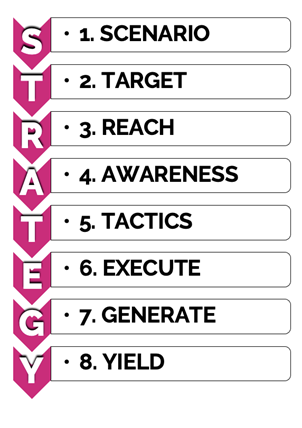Strategically Using AI
Is this going to be another blog post about AI? To be blunt, yes, it is. But it is a blog with a difference. There has been tremendous excitement, interest and fascination with the possibilities of using generative AI tools like chat GPT, Bard, and so on. But what does this mean for email marketing? Did I use AI to generate this blog post? I could have done that. I didn't use AI to create the copy, but I used voice type, a form of artificial intelligence. But I needed to vet my blog content before it was finished to ensure it made sense because voice typing could be better! That is the key ingredient to successfully using any additional tools, whether AI, automation, or ESPs. As marketers, we will always have a role to play as humans. And this got me thinking about email marketing. It isn't a case of just purchasing the tool, the technology, and the platform, and simply sending our email campaigns.
|
Note: The Author of this blog post, Jenna Tiffany (Let'sTalk Strategy) will be leading a discussion on this topic during the OI-members-only Live Zoom on Thursday, November 9, 2023. OI members -- see you there! Not a member? Join today -- or reach out to Jeanne, our general manager, to learn more. |
Of course, we can do that, and we know that it won't be as successful as it could be, and that is because there is one key missing ingredient—the strategy. Now, even with generative AI, ChatGPT and so on, there still needs to be a process where we check the results. Where do we assess whether we are achieving our objectives? We also align our email marketing strategy and plan to the organisational goals and objectives because if we don't, we risk not contributing towards the organisation's vision and mission. You must create specific prompts to be effective with tools like ChatGPT. If those prompts are unclear and don't have a clear objective of what you are trying to achieve by using that AI tool and the desired output you're expecting, it won't produce anything of quality. This is the same for our email marketing activity. If we are unclear about our email marketing objective, if we are unclear about the micro and macro environments in which we are operating, if we are unclear about our customers and if we are unclear about our competitors, all of that can hinder the success of our email marketing activity.
In this blog post, I'd like to readjust the focus on chasing after the following shiny tool. Yes, it is a shiny AI tool that can do some incredible and unique things, but only when used effectively. The first place for us to start, especially as we're coming into the year's final quarter and planning now for 2024, is a time to take stock, re-evaluate, and reassess the email marketing performance for the last quarter to start planning your strategy for 2024.
How to start planning your strategy: I've broken it down in my strategy framework. Over three years, I spent a lot of time creating, formulating, and finalising a framework that provides a blueprint to marketers for developing a strategy for any channel. Suppose you already have a strategy in place. In that case, you can jump to the relevant parts of the frameworks, such as Tactics, Execution, or Yield. If you're in a place where you need to create a strategy or you want to plan a new strategy for 2024, using the STRATEGY framework will help make sure that you bring everything together so that you have that full view of both what's happening inside your organisation and within your existing email marketing activity, but also with your external activity marketplace as well.
When email marketing is conducted correctly, it is an intelligent and sophisticated art. However, as technology continues to change, we risk becoming obsessed with jumping to the next shiny thing to raise the profile of a campaign without worrying about the finer details of how this can be done effectively. Our obsession can manifest itself in focusing on basic performance metrics, such as open rates, as the determinant of creating high-quality campaigns with longevity.
So, as we begin to include more AI in our email marketing activities, let's take a step back and reassess or create (if we don't currently have one in place) an email marketing strategy for the future.

The STRATEGY framework. Source: Tiffany (2021), Marketing Strategy: Overcome Common Pitfalls and Create Effective Marketing, Kogan Page
Scenario
Start by understanding or re-evaluating where the business is now and the performance of your current email marketing activity. A SWOT is a well-known and practical model that can be used to analyse the internal workings of your organisation and your email marketing activity. Let's take this further and use the SWOTELL to derive actions from our analysis. ELL, besides a traditional SWOT, focuses on analysing your current email marketing activity.

The SWOTELL. Source: Tiffany (2021), Marketing Strategy: Overcome Common Pitfalls and Create Effective Marketing, Kogan Page
The key questions to ask are:
- What does your email marketing activity currently consist of?
- Are there any limitations or anything that is holding your email marketing back?
- What can you leverage? You may have incredible in-house design skills that are currently being underutilised.
Target
Setting objectives is vital to retaining the focus of your email marketing activity but also in being able to report on the performance of your activity. If the goals could be more precise, so would the presentations to senior management or directors about email's contributions to the organisation's bottom line, which could be better for future budget conversations. The questions to ask:
- What are the objectives?
- How do the email marketing objectives support the organisation's goals?
- What is email marketing aiming to contribute?
Reach
The customer! Being customer-centric in highly competitive industries is crucial for success. Annually, research indicates that email marketing is a preferred channel for consumers. It is quick and easy to use, so use it! Take advantage of that and ask your customers, send surveys, and learn more about who they are by analysing the data being captured after every send, at every interaction point (especially across a digital experience). Ask yourself:
- What is the key benefit of your product, service or in receiving your email communication to the customer?
- What are customers' expectations when engaging with your email marketing?
Awareness
Every email marketing strategy has an action in mind; whether it is to drive sales, website traffic, loyalty or feedback, there is an action. This links back to Reach and understanding your subscribers to effectively provide them with those benefits they seek from you. Question the following:
- How do you drive a response?
- What is going to engage your audience?
Tactics
Email marketing is the channel; how we use it is the tactic. That could be to send weekly email newsletters or to promote our latest webinar event using personalisation. AI is the tool enabling us to make that tactic happen, to put it live. The focus here to be practical relies upon STRAT -- if any of these elements need to be added or clarified, we could choose the wrong tactic. We could disengage our subscribers. Questions:
- How could we use email marketing tactically to engage our subscribers?
- Is it to send daily emails? (probably only if you have something compelling and engaging to share daily.)
Execution
Once we have determined STRAT, we are moving into implementing the strategy in Execution. Ask yourself:
- What resources do you need to implement this email strategy?
- Are there specific budget requirements?
- What skills are required, and do you have access to those in-house, or is an agency's support needed?
Generate
Now, in both GY, the importance of having a transparent, measurable element to the objective becomes vital to understanding if your email strategy is on track or falling behind or below expectations.
Yield
Post-campaign analysis of comparable performances provides insights into what should be repeated, stopped and changed for future email activity. This is organisational and objective dependent and could include YOY or MOM comparisons. There's a great opportunity here to improve future email marketing campaigns, learn about your audience, and use that information to tailor future activity.
Of course, AI can help uncover the hidden gems in the data gathered, automate email marketing campaigns at scale, and provide your scenario analysis. But the email marketer needs to strategise all that information to vet the right plan for your organisation and subscribers.

 How to resolve AdBlock issue?
How to resolve AdBlock issue? 

 Jenna Tiffany is Founder & Strategy Director at Let'sTalk Strategy providing strategic consultancy services across the digital marketing mix. Jenna is a Chartered Marketer and elected Fellow of the IDM with over ten years’ marketing experience across both B2B and B2C. Jenna has consulted with brands such as Shell, Hilton and World Duty Free to name a few on digital and email marketing strategy.
Jenna Tiffany is Founder & Strategy Director at Let'sTalk Strategy providing strategic consultancy services across the digital marketing mix. Jenna is a Chartered Marketer and elected Fellow of the IDM with over ten years’ marketing experience across both B2B and B2C. Jenna has consulted with brands such as Shell, Hilton and World Duty Free to name a few on digital and email marketing strategy.